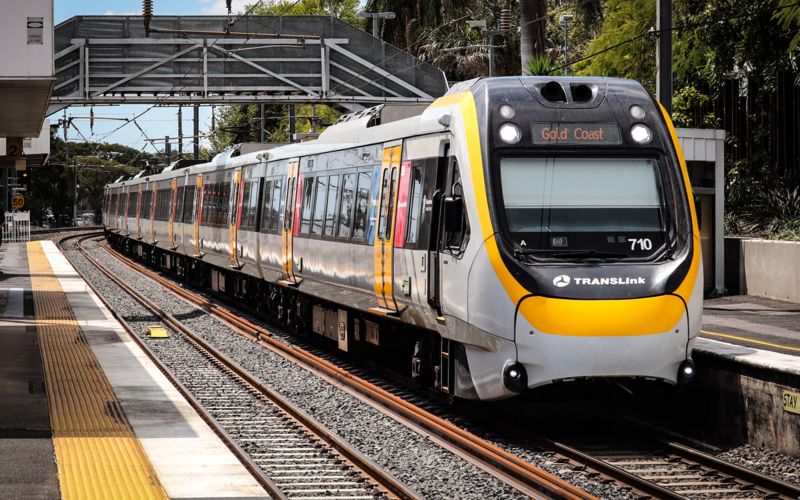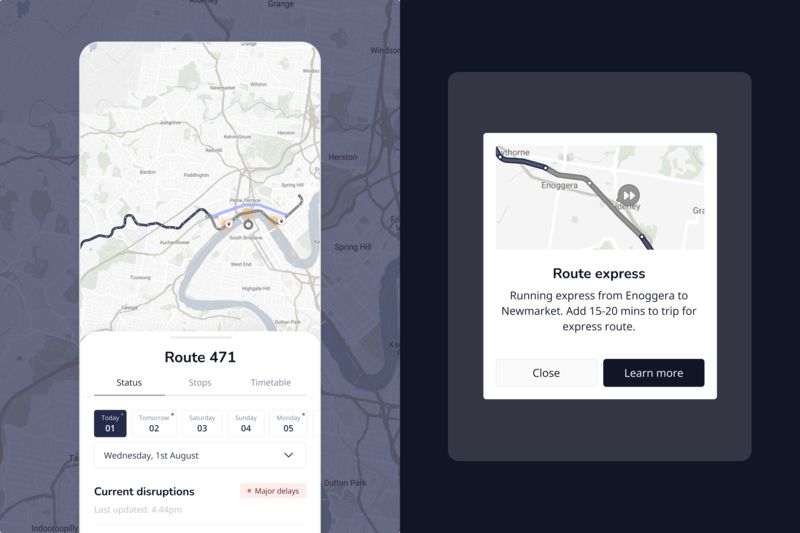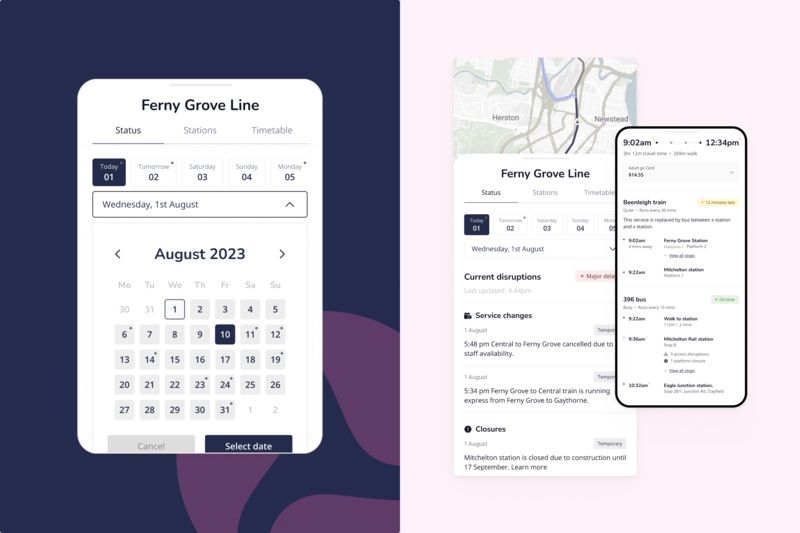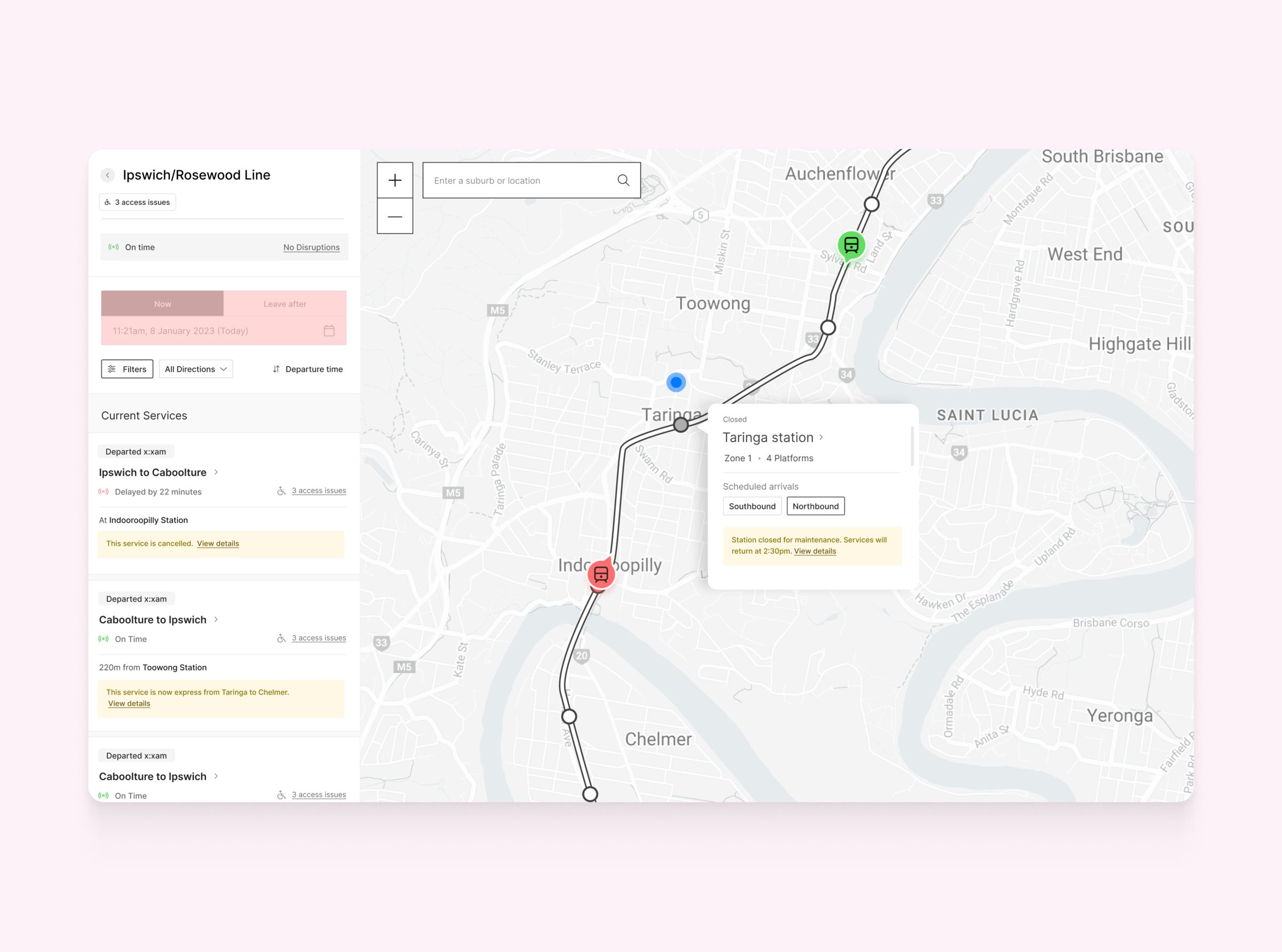Translink — Designing a smarter way to manage and communicate disruptions across Queensland’s public transport network


The Challenge
Translink, a division of the Department of Transport and Main Roads (TMR), is responsible for coordinating Queensland’s public transport services across multiple modes — including buses, trains, ferries, and trams. With a highly manual process for managing service disruptions, Translink needed a better way to inform customers and streamline operational workflows across the Translink Operations Centre (TOC), delivery partners, and communication teams.
The goal was to explore a proof of concept (PoC) for a digital Disruption Management System (DMS) that could:
- Provide real-time visibility of planned and unplanned disruptions
- Centralise communication workflows
- Reduce manual handling
- Deliver a more consistent customer experience across digital channels
- Scale for future integration across external agencies and partners


Our Approach
To inform the PoC, we worked closely with stakeholders from Translink’s Digital Solutions, Communications, Network Planning, Real-Time Systems, and the TOC. This collaboration shaped a detailed understanding of both the operational needs and customer communication expectations.
Our discovery phase drew upon:
- Existing customer research and user behaviours
- A detailed communication matrix and service disruption classification system
- Real-world use cases across all transport modes
- Existing content workflows and infrastructure constraints
- From this foundation, we created a flexible and scalable disruption design system capable of classifying and communicating disruptions with greater clarity — no matter the mode, severity, or duration.


What We Delivered
The prototype focused on two key streams: service classification and communication delivery.
1. A Disruption Classification System
We developed a structured and user-friendly framework to consistently label and display disruption types. Categories included:
- Run-time service delays (minor, major, suspended, cancelled)
- Service changes (express services, detours, skipped stops, reduced carriages)
- Station/stop/terminal closures and access disruptions
Planned vs unplanned vs permanent changes
Each disruption type included clear copy templates, iconography, and usage criteria tailored for bus, train, ferry, and tram services.
2. A Multichannel Communication Strategy
- We mapped disruption content across all relevant channels:
- Translink website and MyTranslink app
- Push notifications, SMS, and GTFS feeds
- Social media posts and service alerts
- Contextual in-app banners and notices
- Design mockups visualised how disruptions would appear across line lists, route views, journey details, and station pages, prioritising real-time visibility and consistency.


The Impact
The disruption design system prototype helped Translink:
- Visualise a future-ready digital approach to disruption management
- Reduce reliance on manual processes by introducing smarter classification and automation opportunities
- Improve customer trust and journey planning through clearer and faster updates
- Support feasibility planning for an enterprise-wide system rollout
A final recommendations paper was delivered to TMR, outlining:
- Technical capabilities of the proposed solution
- Usability feedback
- Cost and resource implications
- Roadmap for future implementation
Looking Ahead
This proof of concept marks the first step in transforming how Queensland communicates with its public transport users in times of disruption. The proposed system is designed to scale — with the flexibility to incorporate future integrations and an enhanced real-time experience for all stakeholders and travellers.
Services & Expertise
- Website and Digital strategy
- Strategic Website Consulting
- Stakeholder engagement
- Product definition & roadmapping
- Technology platform evaluation
- Competitor & peer reviews
- User interviews, focus groups & surveys
- User journey mapping
- Information architecture
- User experience design
- User experience (UX) design
- Website Design Wireframing
- Website and Web-app Prototyping